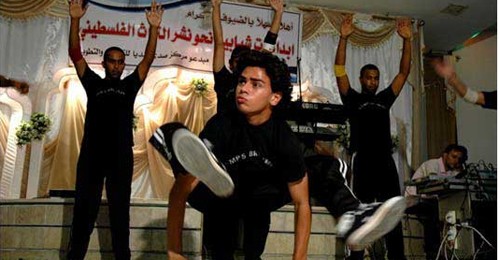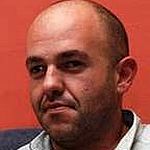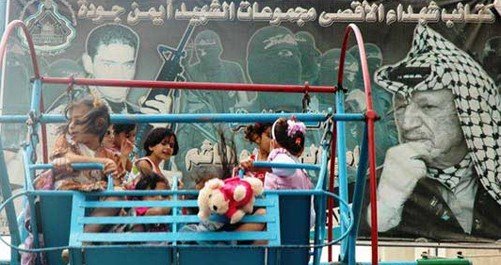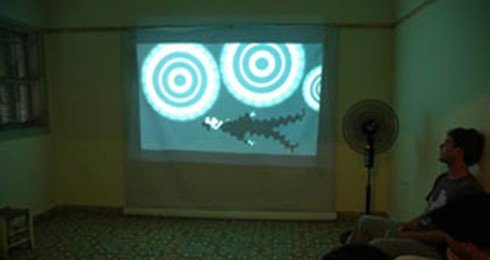
Palestinian youth in the Gaza Strip make up the biggest segment of society, with more than half of the 1.5 million population under 18 years of age.
Trapped in a blockaded strip of land with one of the highest densities in the world at 3,881 persons per square kilometres, Gaza's young population is growing at a fast rate, while opportunities for this segment of society have been dwindling to nothing over the years.
According to the latest UNRWA census for 2007 released in January 2010, the youth segment in all of the Occupied Palestinian Territories aged between 15 and 24 grew by 37 per cent in the last decade, nearly 7 percentage points faster than the population as a whole. In Gaza alone, the youth segment grew by more than 7 percentage points faster.
"This had, and will have, important ramifications for OPT social and political development," the census authors argue, citing above average unemployment rates faced by youth.
The rapid growth of the youth segment has exacerbated the unemployment problem as it was also partly responsible for an even more rapid growth of the working age population (15 to 64 years). Combined with constrained employment growth due to the prolonged economic crisis, the growth of the youth segment in Gaza produced unprecedented levels of unemployment and poverty, making job creation even more of a priority. In fact, according to the same study, more than 76,000 jobs will be required each year in Gaza, alongside 67,000 in the West Bank. To put the scale of the challenge into perspective, the number of employed persons in Gaza in 2008 decreased by 27,000.
Since September 2000, the labour market as well as all other services sectors started deteriorating, where it can be noticed that participation rate in the labour force in 2004 decreased to 20.9 per cent among youth 10-24 years compared with 25.1 per cent in 2000 in Gaza according to the Palestinian Central Bureau of Statistics.
The blockade in the last years, and the disastrous effect of the war on Gaza in
the January 2009 Operation Cast Lead, have led many enterprises and industries out of business. The fishing industry, for example, has been crippled with the the 3nautical mile limit in which they can venture with their boats, forcing thousands of fishermen out of the job.
The same applies to jobs in the agriculture sector where thousands of metres of land bordering with Israel are out of reach given the daily shootings from Israeli soldiers, not to mention the wholesome destruction of trees and farmed land in the Israeli army's weekly incursions.
The blockade has also made it next to impossible for Gazan youth to leave to study in the West Bank, and even harder to go abroad. This situation is indicative of a total segregation of Gazan from West Bank youth, in which young people from both sides are growing up totally cut off from each other and oblivious to the realities of their own compatriots.
Figures from Birzeit University in Ramallah show how the situation has been getting progressively worse for students from Gaza over the last 10 years. In 2000, a total of 350 students from Gaza at the Birzeit campus were deported. By 2005 there were only 35 Gaza students at Birzeit. Today there are none. In a 2006 ruling, the Israeli High Court forbade Palestinians from accessing Bethlehem University , accepting the argument used by the Israeli state that once they were given permits to leave they would ahve become "information carriers".
The ban applies also to Gaza residents accepted to study at Israeli academic instutions, but there is no hope of studying abroad since the Rafah crossing has also been closed almost completely since June 2007. At the time, 722 Palestinian unversity students studying abroad were trapped in Gaza, together with another 2,000 enrolled in foreign schools. According to Right to Education Campaign, they are part of the 7,500 Gazans who need permission to continue their work, education or medical treatment out of Gaza. This is leading to hundreds of students granted scholarships abroad - including Fulbright scholarships in the US, to lose them.
Considering that from working in agriculture to educational advancement remain so prohibitive for Gazans, the prospects for Palestinian youth trapped here remain bleak.
With nearly 78 per cent the population living below the poverty line, many poor families alternate which children they send to school so they can help with work. In September 2007, UNRWA revealed that 30 per cent of their students were without textbooks as the Israeli army prevented them from entering Gaza. UNRWA accounts for 200,000 students in Gaza, about half the total number of school children in the Strip. Since 9 April, 2008, the Israeli blockade on fuel supply to the Gaza strip has paralysed 50% of the educational sector, as half the students at all levels of education are unable to reach their schools and universities.
Needless to say, the closure and the ensuing economic and social situation in Gaza reflect themselves in all aspects and sectors of daily life - from leisure time to marriage, from an ingrained conservatism to a bleak outlook for the future.
Although slightly dated, a specific youth survey carried out in 2003 by the Palestinian Central Bureau of Statistics sheds light on trends and lifestyles of young Palestinians.
As the authors put it, "the impact of Israeli measures imposed on the Palestinian Territory affected all aspects of youth life, where it affects their access to health and education services, leisure time, cultural activities, where data showed that 26.6% of youth refer not practicing their activities to Israeli measures."
Among other reasons preventing Palestinian youth from practicing the activities they desire, they ranked the following: 16.3 per cent said because of political conditions, 19.4 per cent cited the high cost of such activities, 17.4 per cent mentioned the unavailbaility of adequate leisure time, 13.7 per cent vited unavailability of desired activities and 1.6 per cent said they were not allowed by their parents or faced their rejection.
Of Gaza's youth, 78.2 per cent said they spend their free time at home as first perference, 10 per cent with friends and relatives, 3.6 per cent in places of worship and 1.6 per cent in unviersity and school clubs. 2.8 per cent chose 'the street' as first preference for spending their free time, 1.9 per cent in youth centres and clubs, and 0.1 per cent at societies and NGOs. Cinema and theatre have 0 per cent priority, sports halls 0.3 per cent while libraries 0.1 per cent. The percentage of the Palestinian youth using the computer and the internet as a leisure time activity is 4.5% in the Gaza Strip.
Statistics showed that while 14.8 per cent of women aged 15 to 19 in the Gaza Strip were married, only 0.8 per cent of men of the same age were married. The discrepancy is also reflected in the age bracket 20-24, where 56.5 per cent of women as opposed to 22.4 per cent of men were married. By age 25-29, the number of married women goes up to 80.9 per cent, as opposed to 65.4 per cent of married men.
The stated preferred age of marriage is 20 for women and 24 for men. 91.8 per cent cite the high cost of marriage as a reason for delaying setting up family, while 66.9 per cent believe pursuing education is also a reason for postponing marriage.
65.6 per cent of youth in the Gaza Strip aged 10 to 24 believe the mother should put the caring of the family before anything else, as opposed to 50.2 per cent thinking the same applies to the father and another 48.6 per cent who believe the father should be perform family duties and other concerns together.
According to the same survey, only 13 per cent of Gazan youth practice sports, with the majority of young people at 31.6 per cent stating watching TV as their primary leisure activity.
The survey authors say low percentage in sports participation can be attributed to the difficult conditions that Palestinian society has been encountering since the breakout of of the Al Aqsa Intifada in 2000, coupled with the large number of incursions, closures, injuries and victimes.
"Moreover, because of these conditions, many of the sporting clubs have suspended their activities," the authors note.
Another 11.4 per cent say they review lessons at home, 8.8 per cent engage in cultural activities, and 3.7 per cent practices manual work.
Even though the survey was carried out before the total blockade, only 0.5 per cent said they went on trips abroad, while 2 per cent said they went on trips inside the country.
Beyond the present situation of young people, it is the upcoming generation of children that seems to be most worrying. A whole generation of Palestinians will have never got out of the besieged strip, never interacted with foreigners or even met Israelis except as enemy soldiers intent on killing and destruction, with psychologists reporting an alarming rise in violent behaviour and disrespect to their parents and toward authority in general.
A study published by the Gaza Community Mental Health Programme months after Operation Cast Lead shows that just under 50% of children aged 6-17, who were exposed to the last war that lasted 23 days and claimed the lives of around 1,400 Palestinians, think "often" or "almost always" of seeking revenge on whoever is responsible for the death of close people.
According to the same study, in the last war, 50% of children lost a close relative or friend, 54% witnessed assassination of people by rockets. Over 90% heard the shelling of their area by Israeli artillery and the sonic sounds of jetfighters, and an equal amount witnessed shelling on the ground and saw mutilated bodies on TV.
As many as 69% of children were forced to flee their home during the war, and a staggering 99% said they did not feel safe at home and felt neither the family nor anyone else could protect them.
As the UNRWA head in Gaza, John Ging, repeatedly put it when trying to explain the radicalisation of Gaza's youth: "If you have no reason to live, you will seek a glorious death."
If nothing changes in blockaded Gaza, that could easily become the epitaph of a lost generation.






